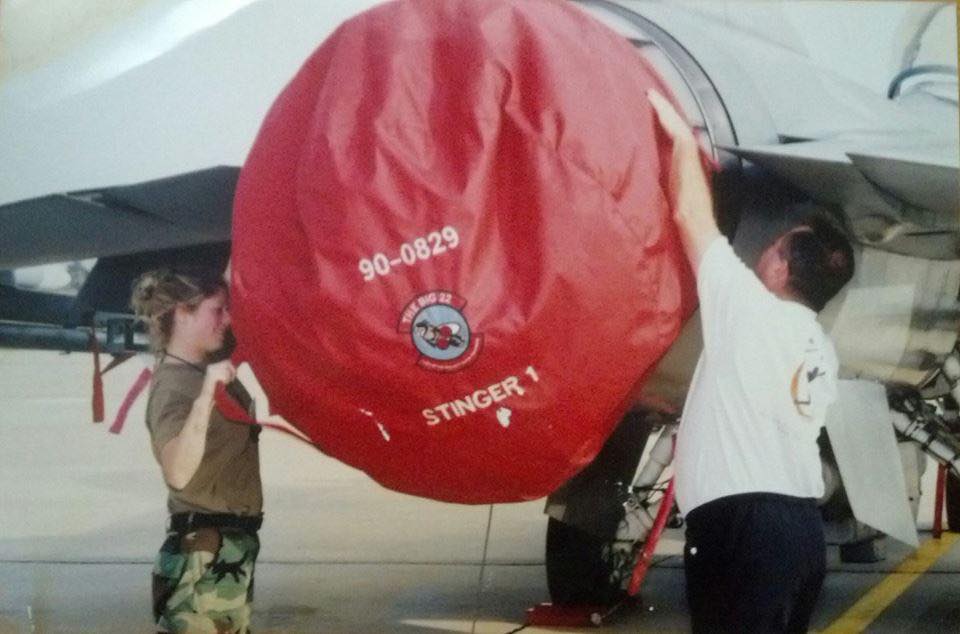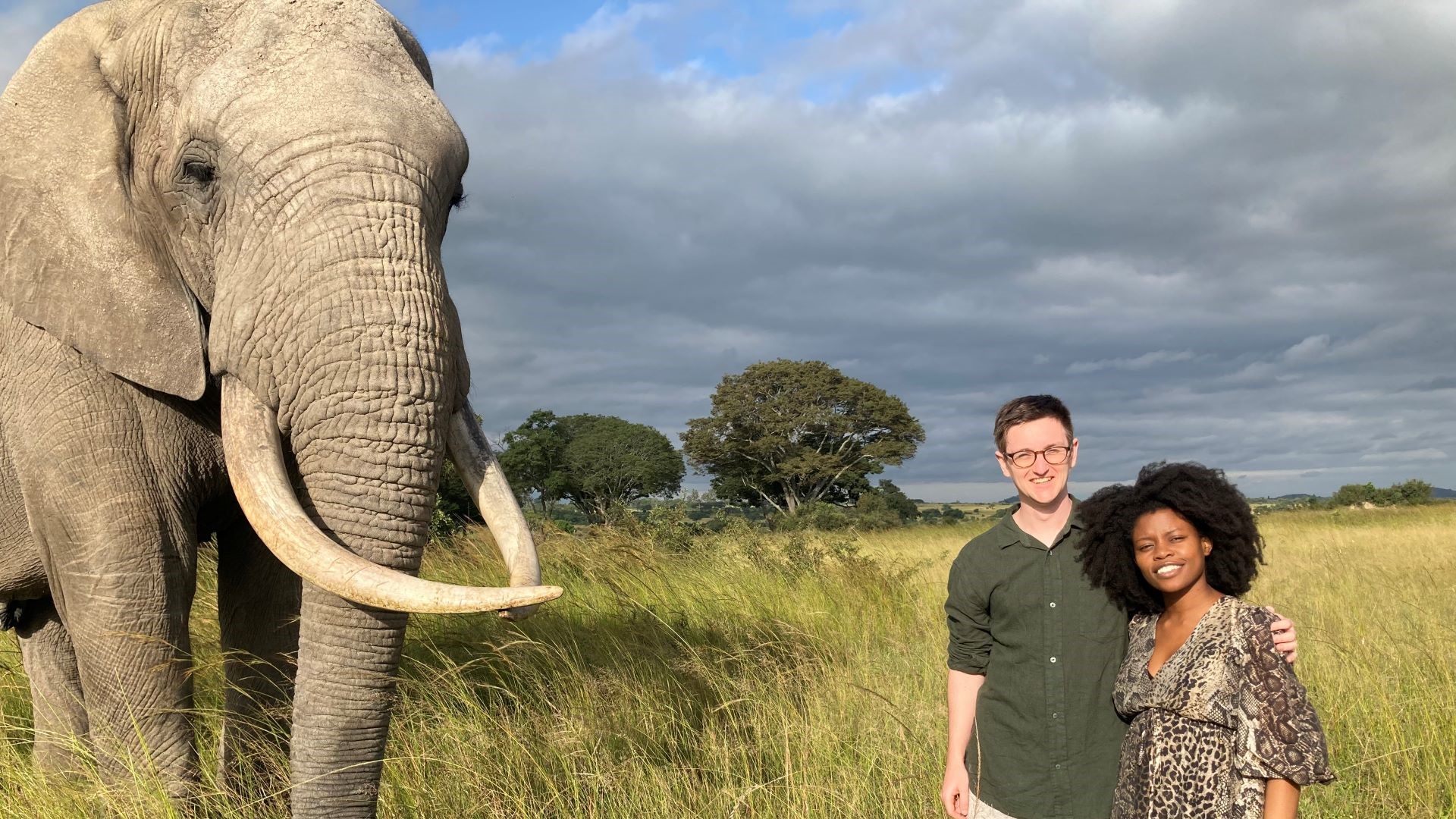From the Flight Line to GE Aerospace: How Emily Wannarka's Career Continued to Soar after Serving in the Military
December 07, 2023 | by Lauren Devoy
It's difficult to select just a few highlights from Defense & Systems Product Support Engineer Emily Wannarka’s military family lineage, as it stretches back all the way to the American Revolutionary War. Her four great uncles flew or were mechanics during WWII, most notably her great uncle Robert Walsh is accredited with naming the A-36A Invader dive bomber.
Then there is her grandfather, who was in the Army Air Corps when it became the US Air Force as a Load Master on C-130s during the Korean War and went on to work for GE as an electrical engineer after retiring from the Air Force.
More recently, her father was a missileer in the USAF, her aunt was one of the first female navigators on the KC-135 Stratotanker, and her uncle served as a special ops gunner on the AC-130H Spector during Desert Storm.
That family history made a lasting impact on Wannarka–from her career choice to giving her children the flight inspired names of Talon and Eilley, which means beautiful bird in Gaelic.
“I guess you could say it’s in my DNA,” said Wannarka.
Wannarka was an F-16 and F-117 crew chief during her time In the service, managing her own aircraft, handling launch recovery, and maintenance, among other duties. After leaving the US Air Force, she entered the medical field, but her passion for aviation drew her back to the industry and GE Aerospace.
In 2014, Wannarka joined GE Aerospace as an industrial test engineer in the Marine segment. She wound through several roles in engine diagnotics, technical support, process improvement in CFM assembly and repair at Elano before seeing an open role that she felt was made for her as a product support engineer (PSE) on the F110 engine. The PSE team provides world-class technical and logistical support to customers in the operation, maintenance, and management of GE powered fleets.
“It was everything I’d dabbled with over the years all rolled into one,” she said.
Wannarka's career path differed from her teammates. While she doesn’t have the years of engineering experience like many on her team, she has the F110 hands on experience, which has been a valuable strength.
“My manager and his predecessor both understand that my background is an asset. They’ve been great at highlighting my strengths and knowledge. I learn something new every day, and it’s what I love about this role."
Wannarka recently took a group of engineers to Shaw Air Force Base in South Carolina for an ‘Immersion Visit,’ which takes groups of engineers that have never been around a running jet to the flight line. “There’s something to be said for smelling that exhaust and feeling the rumble of the engines on a flight line,” says Wannarka.
Her last time at Shaw was for an En Route Support Team duty from Red Flag at Nellis Air force base, NV, returning jets home to Spangdahlem, Germany.
“We were only supposed to be there for three days. We wound up being marooned for three weeks. We had one jet that was broken, and we’d changed out everything short of pulling the motor. Thanks to the host squadron, they got in touch with their GE rep. I just remember thinking, ‘It’s the middle of the night,’ yet this GE field service rep comes out with his laptop and hooks it up, we crank the motor, and he told us exactly what to replace. Sure enough, just 30 minutes later, the jet was fixed and ready to go home. The GE rep was a hero to us that night.”
Being back at Shaw last month with a team of engineers, she felt she’d come full circle. She was talking with the people on the line and asking them what they wanted to do after the Air Force. Their answer was always the same−that they’d love to come and work for GE.
“I remembered that GE was always the dream job for us out on the flight line, and here I am,” she says.

Wannarka said she also enjoyed showing the engineers from Evendale the line and getting them hooked up to the radio transmission so they could be a part of launches between the pilots and the maintainers.
“The passion the GE people have for aviation is immeasurable. They were like kids on Christmas morning,” she says. “It was very rewarding for me in that I got to show my GE family where I'm from and show my brothers and sisters on the line what is possible if they work hard and pursue their Airframe and Powerplant license and attain the degrees necessary.”
Wannarka has always had an emphasis on education and lifelong learning. She earned her Airframe and Powerplant license, a bachelor's degree at the University of Phoenix and a master’s degree from Penn State University.
Her one piece of advice for someone looking to pursue her line of work is to get an education.
“Above all, go to school and get an education. Getting an education is priceless,” she says.
Wannarka said that she feels her educational background is what pushed her further in her career, from the flight line all the way to GE Aerospace.
Then there is her grandfather, who was in the Army Air Corps when it became the US Air Force as a Load Master on C-130s during the Korean War and went on to work for GE as an electrical engineer after retiring from the Air Force.
More recently, her father was a missileer in the USAF, her aunt was one of the first female navigators on the KC-135 Stratotanker, and her uncle served as a special ops gunner on the AC-130H Spector during Desert Storm.
That family history made a lasting impact on Wannarka–from her career choice to giving her children the flight inspired names of Talon and Eilley, which means beautiful bird in Gaelic.
“I guess you could say it’s in my DNA,” said Wannarka.
Wannarka was an F-16 and F-117 crew chief during her time In the service, managing her own aircraft, handling launch recovery, and maintenance, among other duties. After leaving the US Air Force, she entered the medical field, but her passion for aviation drew her back to the industry and GE Aerospace.
In 2014, Wannarka joined GE Aerospace as an industrial test engineer in the Marine segment. She wound through several roles in engine diagnotics, technical support, process improvement in CFM assembly and repair at Elano before seeing an open role that she felt was made for her as a product support engineer (PSE) on the F110 engine. The PSE team provides world-class technical and logistical support to customers in the operation, maintenance, and management of GE powered fleets.
“It was everything I’d dabbled with over the years all rolled into one,” she said.
 Images courtesy of Emily Wannarka.
Images courtesy of Emily Wannarka.
Wannarka's career path differed from her teammates. While she doesn’t have the years of engineering experience like many on her team, she has the F110 hands on experience, which has been a valuable strength.
“My manager and his predecessor both understand that my background is an asset. They’ve been great at highlighting my strengths and knowledge. I learn something new every day, and it’s what I love about this role."
Wannarka recently took a group of engineers to Shaw Air Force Base in South Carolina for an ‘Immersion Visit,’ which takes groups of engineers that have never been around a running jet to the flight line. “There’s something to be said for smelling that exhaust and feeling the rumble of the engines on a flight line,” says Wannarka.
Her last time at Shaw was for an En Route Support Team duty from Red Flag at Nellis Air force base, NV, returning jets home to Spangdahlem, Germany.
“We were only supposed to be there for three days. We wound up being marooned for three weeks. We had one jet that was broken, and we’d changed out everything short of pulling the motor. Thanks to the host squadron, they got in touch with their GE rep. I just remember thinking, ‘It’s the middle of the night,’ yet this GE field service rep comes out with his laptop and hooks it up, we crank the motor, and he told us exactly what to replace. Sure enough, just 30 minutes later, the jet was fixed and ready to go home. The GE rep was a hero to us that night.”
Being back at Shaw last month with a team of engineers, she felt she’d come full circle. She was talking with the people on the line and asking them what they wanted to do after the Air Force. Their answer was always the same−that they’d love to come and work for GE.
“I remembered that GE was always the dream job for us out on the flight line, and here I am,” she says.

Wannarka said she also enjoyed showing the engineers from Evendale the line and getting them hooked up to the radio transmission so they could be a part of launches between the pilots and the maintainers.
“The passion the GE people have for aviation is immeasurable. They were like kids on Christmas morning,” she says. “It was very rewarding for me in that I got to show my GE family where I'm from and show my brothers and sisters on the line what is possible if they work hard and pursue their Airframe and Powerplant license and attain the degrees necessary.”
Wannarka has always had an emphasis on education and lifelong learning. She earned her Airframe and Powerplant license, a bachelor's degree at the University of Phoenix and a master’s degree from Penn State University.
Her one piece of advice for someone looking to pursue her line of work is to get an education.
“Above all, go to school and get an education. Getting an education is priceless,” she says.
Wannarka said that she feels her educational background is what pushed her further in her career, from the flight line all the way to GE Aerospace.





